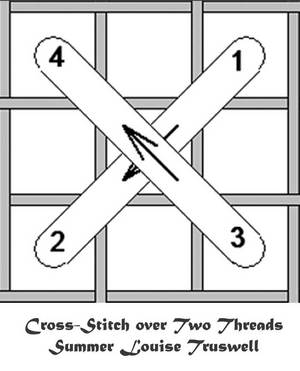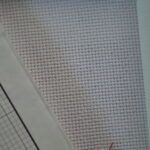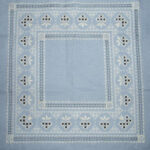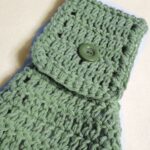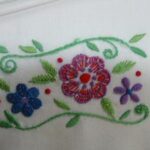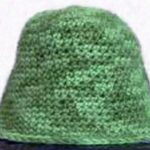The Cross-Stitch could be considered the square building block of needlework. The cross-stitch is not considered a specialty stitch because it is so basic, being comprised of only two stitches that cross over one another.
Cross-stitches can be worked over one thread or two threads, meaning each stitch crosses over one linen thread vertically and horizontally, or crosses over two threads horizontally and vertically. If the cross-stitch is worked over one thread, the size of the stitch is ¼ the size of the cross-stitch worked over two threads.
The shape of the cross-stitch is actually an X, which means that the background fabric color will always show through the stitched threads a small amount. For this reason the needleworker may wish to use a darker fabric when stitching a dark piece, or use a neutral cream when stitching other fabrics. White fabric is very stark and will make colors project more from the fabric, but will make the X shape of the cross-stitch more noticeable.
Cross-stitches can be stitched with between one and six strands of thread, depending on the thread count of the fabric. The strands of thread should be bloomed, or pulled individually from the skein, and then put back together in the desired amount before stitching. This separation of the thread allows the strands to provide better coverage on the fabric.
Suggestions for number of strands on thread count are provided below:
7-count Aida Fabric – 6 strands floss
10-count Tula Fabric – 4 strands floss
25-count Evenweave Fabric stitched over 2 threads – 2 strands floss
14-count Aida Fabric – 2 strands floss
28-count Linen or Evenweave Fabric over two threads – 2 strands floss for excellent coverage
28-count Linen or Evenweave Fabric over two threads – 1 strand floss for lighter coverage
16-count Aida Fabric – 1 strand floss
32-count Linen or Evenweave Fabric over two threads – 1 strand floss
36-count Linen over two threads – 1 strand floss
25-count Evenweave Fabric over one thread – 1 strand floss
28-count Linen or Evenweave Fabric over one thread – 1 strand floss
32-count Linen or Evenweave Fabric over one thread – 1 strand floss
40-count silk gauze over one thread – tent stitch (similar to half cross-stitch) with one strand floss
When cross-stitching, cross all of the stitches in the same direction. This allows the light to shine off the stitches more evenly. Maintain even tension and do not pull the stitches too tightly. A laying tool is not necessary to stitch the cross-stitch but you may enjoy working with one. Try and keep the separate threads laying parallel to each other for best coverage. When stitching, occasionally let the needle drop to allow the threads to untwist.
How to Read a Stitch Diagram:
Enlarge the stitch diagram so that the numbers are visible.
The stitch diagram shows both odd and even numbers. On this diagram follow the numbers in sequence, stitching in the direction of the arrow. Threads often share a hole on the fabric, so you may not see all of the numbers.
Unless the directions state otherwise, use smooth tension and pull the thread gently to allow the thread to lay flat and smooth on your linen without buckling the fabric. Often the goal is coverage of the fabric, not distortion.
Stitching the Cross Stitch:
Thread a tapestry needle with the desired thread.
Anchor the thread on the back side of the fabric with a waste knot.
Come up from the back side of the fabric in an unused hole; make one leg of the stitch, then make the second leg of the stitch.
Ideas for Usage:
As said earlier, the cross-stitch is the building block of needlework. Use a cross-stitch when following needlework charts by stitching one cross-stitch where indicated by a symbol on the chart.
Use a row of cross-stitches between bands of specialty stitches to create your own sampler.
Use cross-stitches to fill in an area that will later be covered by satin stitching. This adds to coverage of the fabric and also pads the area slightly.
Now you know how to stitch the Cross Stitch. Enjoy!
About the Author:
Summer Louise Truswell is a professional needlework designer, author, teacher, and finisher. Her designs range from the whimsical to the traditional. View pieces or get more information about professional needlework finishing on her websites at www.needleworkfinishing.com and www.needleworkdesign.com.
